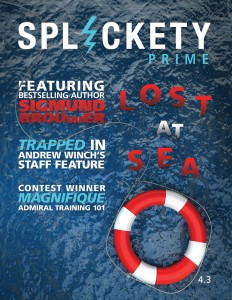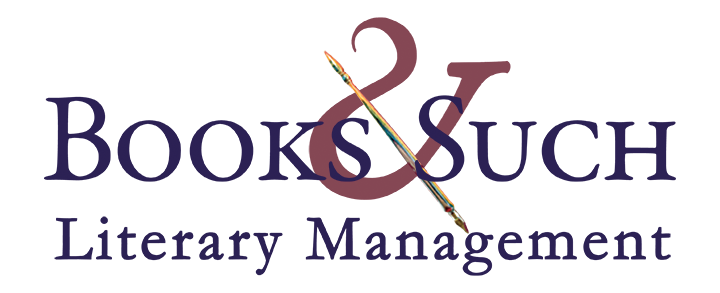Blogger: Mary Keeley
Agents and editors are aware of what their request for a proposal means to an author. Some will request the first few chapters, and others may ask for the complete manuscript, especially from debut authors. That’s often when writers clutch, not sure if their work or their proposal is ready for prime time. Here to the rescue is a checklist to help you know what to do when you get a proposal request.
 But first, in case you missed our Tuesday and Wednesday blogs or the lunar eclipse messed with your Internet connection, I want to remind you about the nano fiction contest that Books & Such and Splickety Prime are hosting. Meagan Briggs, Splickety’s editor, offered our blog community a thorough explanation of what flash fiction, micro fiction, and nano fiction are in Tuesday’s post, “The Flash Fiction Challenge.” She went on to explain the rules for entering the contest in yesterday’s post, “Flash Fiction Contest.” Read both posts to get the necessary details for submission. The term Flash Fiction implies a quick turnaround so take note:
But first, in case you missed our Tuesday and Wednesday blogs or the lunar eclipse messed with your Internet connection, I want to remind you about the nano fiction contest that Books & Such and Splickety Prime are hosting. Meagan Briggs, Splickety’s editor, offered our blog community a thorough explanation of what flash fiction, micro fiction, and nano fiction are in Tuesday’s post, “The Flash Fiction Challenge.” She went on to explain the rules for entering the contest in yesterday’s post, “Flash Fiction Contest.” Read both posts to get the necessary details for submission. The term Flash Fiction implies a quick turnaround so take note:
Your nano fiction submission is due by MONDAY, October 5, 2015. Get your entry in right away to be among the first 50 to be considered.
And now the checklist before you respond to a proposal request:
- The manuscript is polished and publication-ready. Participating in the flash fiction contest is a helpful—and timely—exercise for judging if your manuscript needs to be tighter. That is,
- The business section contains all the information the agent or editor needs to know.
- Is the main plot of my novel the central thread throughout my synopsis, and do I communicate adequately how it comes to a satisfying resolution at the end?
- Does my overview proclaim my unique angle about my nonfiction topic, and are my chapter summaries compelling and concise? Do I validate my angle adequately by my experience and expertise? Did I explain the benefits for the reader adequately?
- Does my marketing plan display my initiative and creativity? Do I use assertive words? Did I forget to include anything such as social media numbers, email list, monthly unique visitors to my website, or convincing data showing increased interaction when I post something especially related to what my book is about?
- Is the format designed with the agent or editor in mind? Did I leave white space for order and readability? Bulleted lists where appropriate for time-efficiency?
- Does my author bio focus on my experience and authority for writing this particular book?
- Have I met the submission guidelines of the agency or instructions the agent or editor gave me? As a rule, follow the agency’s or publisher’s submission guidelines. But if an agent or editor gave you specific details about what he or she wanted to see and told you to send your proposal directly, follow those instructions. It’s an example of how easy it might be to work with you.
Did you receive a request for your proposal from an agent or editor recently? What do you think you need to work on to get your manuscript and proposal ready for the publishing world to see? How many of the checklist items have you covered sufficiently to date?
TWEETABLES:
Follow this checklist to be sure your book proposal is ready to submit to an agent or editor. Click to Tweet.
What to do when you get a proposal request? Follow this checklist. Click to Tweet.


I read your checklist, Mary, and think how far I have still to go. But I look back and see how far I’ve come. Like the song says, “I can’t turn back, I’ve come this far by faith.”
Shirlee, I love your positive outlook on the writer’s journey. It’s an inspiring viewpoint for everyone who visits today.
What a great checklist. Keeping the synopsis tight and focused is the hardest part for me. There’s so much I want to tell about my story, and I have to squeeze it into a few words.
Thanks for sharing these tips!
You’re so welcome, Jackie. It’s easy to get sidetracked with details in a synopsis, but remembering to stick to the main plot line and the main characters’ conflicts and struggles through to the final resolution at the end helps. That is what agents and editors need to see in a synopsis.
I think one of the things I need to think through more thoroughly is a solid marketing plan. I am a little intimidated by that aspect, and my social media numbers aren’t very high right now.
I know literary agencies often state their proposal guidelines. Do editors and publishing houses have these listed somewhere for writers to look up and follow?
Jeanne, it used to be that publishers would post submission guidelines on their websites, but because of the increased number of people writing books and vying for fewer available publishing slots, most traditional publishers now accept proposals only from agents. They know those proposals have already been through an in-depth screening process.
I wondered if that was the case. Thanks, Mary!
Jeanne, I’m focusing only on agents now. I’ve had some editors tell me to find an agent, and I think agents will help you be publisher ready. This is my opinion after a couple years of pitching.
Thanks for the great checklist, Mary. My problem is about a month after I’ve sent in my proofed and polished proposal and I think of something new that would really improve that first chapter. Argh! Should I have waited…no I didn’t know this new idea would come, and the ms. was done done done… It is frustrating, but good ideas seem to come after I’ve forgotten about a story for awhile.
Kristen, what you describe is so often the case. I can look an an email or a response to a comment here half an hour later and think of a better way to have said it or an additional point I missed the first time. If you new idea makes the first chapter that much improved and you haven’t yet received a response from the agent or editor to whom you submitted, it isn’t out of the question to send an updated proposal that includes the new chapter in the manuscript. Request that the updated proposal be reviewed in place of the original submission. This is a one-time-only chance so take the opportunity to update marketing plan information, social media numbers, and bio information at the same time.
Entry away, and I bet I am the only one who referenced Mike Tyson’s in-the-ring dining habits in a Christmas story.
* The checklist is excellent. I hope many writers will print it out and post it prominently; it will save a lot of grief and anguish, and will spare an already-polluted atmosphere more bad writerly language.
* I never understood why writers don’t like proposals. To me they are a way to sharpen and define one’s understanding of one’s own work. No creative process is completely open to the creator (I’ll be even God would agree, ’cause look how WE turned out). The best way one can understand it is to look at the arcs and motivations from the different angles imposed by a proposal.
* And writing a synopsis can prevent the full MS from disappearing forever down a plothole. I’ve had a character make the trip from New York to London in less than four hours, and I certain that my 1866 character appreciated my placing Concorde at his service.
Too funny, Andrew, about the four hour trip from NY to London . . . in 1866. 🙂 We all do that stuff, don’t we?
*As for synopses, I always write one for my story before I begin the actual writing. It keeps me on track.
Now THAT is discipline! I’m impressed, Jeanne.
The “dining habits” tickled me. 🙂 Oh, boy!
“To me they [proposals] are a way to sharpen and define one’s understanding of one’s own work.” Excellent point, Andrew.
Your 1866 character . . . a Concorde . . . oops! A memorable example for the value of writing a synopsis.
Can I find a proposal on the internet and just copy and paste my title?
No?
Really?
Are you SURE?
Here’s a tip: do not send anything until you’ve checked it over, let it rest, had smart people look at it, let it rest,and then looked it over again.
I once *heard* of someone sending an agent the wrong MS file. It was full of editor’s notes and track changes. Thankfully, the agent was beyond gracious and asked if THAT was the file I wanted her to see.
I think we also need within the proposal or cover letter to let it be part of a possible conversation that shows an openness to change. Sometimes a proposal is quite transformed on the way to a contract. If an editor knows the author is willing to discuss ideas and make changes that can make a difference in the response.
Karen, good suggestion but with more possibility for nonfiction authors, than novelists.
I learned about the genre word count the hard way – after my novel was polished and complete (and over the word count). However, I have also noticed quite a variety of word counts out there. Am I mistaken, or is there an authoritative guide for this somewhere?
Jen, a good article about word counts was posted on WritersDigest.com a while back. Here is the link:
http://www.writersdigest.com/editor-blogs/guide-to-literary-agents/word-count-for-novels-and-childrens-books-the-definitive-post
Thank you so much!
Thank you for the great advice, Mary! Now, to get to work on that contest! Hmm…The Christmas Agent has a ring to it, don’t you think? 🙂
Sounds interesting, Heidi!
Excellent guidelines. Thank you.
You’re welcome, Norma.
Hi, Mary! I am feeling great about my marketing plan and bio. The synopsis needs some work and, thankfully, my critique group is on hand since they are familiar with the novel. My excitement over being asked to send a proposal is certainly fueling the fire to keep at it. Marathon, not a sprint, this book business. So thankful you’ve shared these reminders and tips.
Hello, Mary! Thanks for the great guidelines! I will be referring to them frequently over the next several months as I prepare to shop my first manuscript.
On a-nano-ther note :), I submitted my nano fiction story. I can’t believe I did it in 99 words! Win or lose, I feel so accomplished! LOL